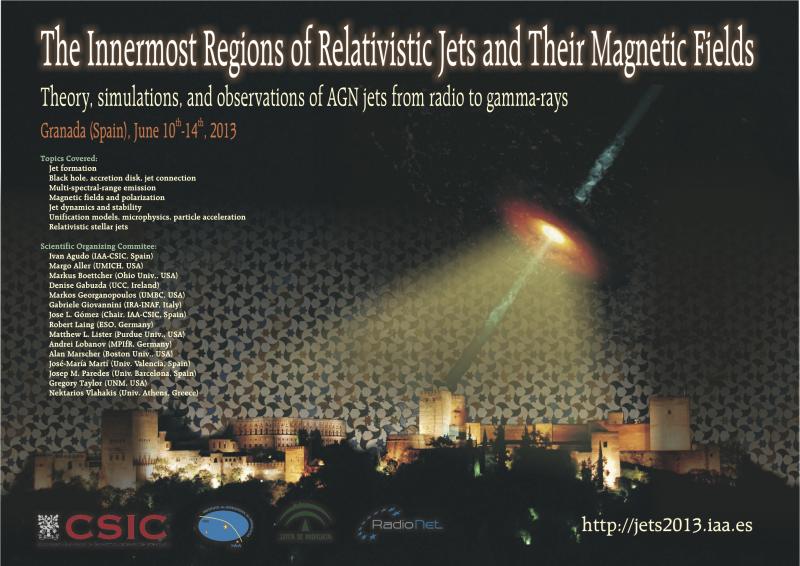The Innermost Regions of Relativistic Jets and Their Magnetic Fields. Granada (Spain). June 10th-14th, 2013.
Lico, Rocco
Multi-frequency study of the TeV blazar Markarian 421 with VLBA observations.
Author list: R. Lico, M. Giroletti, M. Orienti, G. Giovannini, M. G. Blasi, Y. Y. Kovalev, A. Marscher, S. Jorstad, T. P. Krichbaum, M. A. Perez-Torres, K. V. Sokolovsky, B. G. Piner, W. Cotton, P. G. Edwards, L. Fuhrmann, M. Kino, D. Paneque
Thanks to high resolution radio observations it is possible to obtain a direct imaging of the innermost regions of Active Galactic Nuclei; in particular, it is possible to investigate about the jet’s morphology and any proper motions, and the time evolution of physical parameters, such as flux densities and spectral index. In this talk we will present recent results about the nearby (z=0.031) TeV blazar Mrk 421. We analyzed data obtained with the Very Long Baseline Array at twelve epochs (one observation per month from January to December 2011) at 15, 24 and 43 GHz, in the context of a broadband campaign from the radio to gamma-ray. We investigate the inner jet structure on parsec scales through the study of model-fit components for each epoch. At these frequencies the source shows a compact (about 0.13 mas, or 0.08 pc) and bright component, with a one sided jet detected out to about 10 mas. All model-fit components in the jet appear to be almost stationary during our observation period, and the spectral index, in agreement with other works, it is fairly flat in the core region and steepens along the jet's length. We estimate a different jet velocity for the radio and the high-energy emission regions, such that the respective Doppler factors are delta(r) about 3 and delta(h.e.) about 14. Significant flux density variations have been detected for the core component, with a peak in the flux density on February. A comparison of our radio light curves with the optical light curves, obtained at the Steward Observatory, reveals an increase of the V magnitude and of the fractional polarization in correspondence of the radio peak. A preliminary study of the polarization properties and evolution will be presented.




